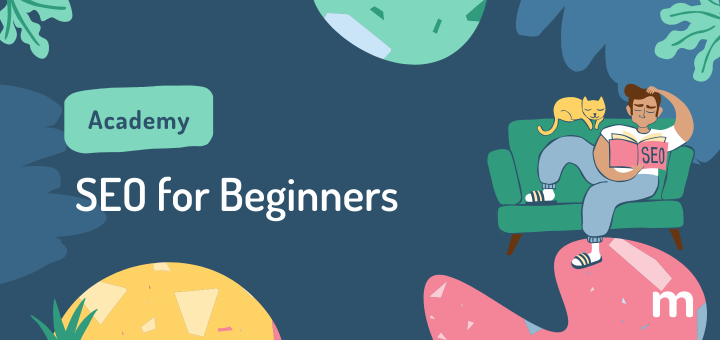Content Marketing strategies for small businesses can be hard to implement – it’s just you and you have all this conflicting information on how to get started and what to focus on. Luckily, Katrina from LeadPath took some time to break it down for you and make it less overwhelming.
It’s tough to do marketing online and to operate without generating content of some sort. People are engaging more than ever with content online, so it’s necessary to get right there where the consumer is. But the variety of mediums to choose from can be overwhelming.
So where to start?
Using Value Above All Else
The first step to great content is to offer value. Value is a unique concept that the marketing world is continuing to define. What value does is give something substantial to readers online. Everyone is looking for their lives to change in a positive way, and everyone wants their lives to be made easier.
So, start thinking about how to design your strategies based on the addition they can make to the lives of your target audience. For the reader to be affected positively, they also have to be affected at an emotional level. Creating that is mastering the art of providing value.
Consider Your Content And The Medium You Use
The “shiny object syndrome” tends to mislead marketers. It tends to misguide us all in a way that makes us commit to many things, so we fail to master one. We don’t want you going down that route. We want you to choose one thing and to be the best at it. That starts with knowing the options you have.
Content comes in many forms. You can choose between blog posts of written text or a series of videos on YouTube. Content like explainer videos and infographics are gaining popularity and enable great optimization for search engines. Other mediums to try are podcasts that grow in popularity every day. Just find one and stick with it for a bit of time. Don’t attempt to do everything!
Nurturing Is The Key To Conversions
Content can convert to sales when it’s set up properly. Positioning content to achieve this is done by using it to nurture. It’s almost impossible to get a first time buyer to purchase a high priced item. Online, you often need to nurture those prospects. Nurturing comes from giving and letting consumers learn more of you.
This validates the request you give them to buy or to get involved. But there are many more types of conversions to get out of readers and viewers online. Consistent, quality content builds confidence in your brand and helps to get those necessary YES! needed to close purchases.
Capturing Leads For Retargeting and For Building Trust
Content is also an effective way to generate leads. Capturing email addresses is usually done by giving viewers something in exchange. If it’s life-changing content, then what better way to get a lead’s email address than to give that content free? Online marketers have been using this strategy for a decade now. It works well.
Developing a short ebook, a case study or an infographic have shown to be effective ways of getting people to generate themselves as leads for businesses. This setup is called an opt-in. In order for online users to get the value rich content you provide, they have to opt-in with their personal information. You can then use those contact details to build your e-mail list.
Presenting Your Brand As The Specialist
There’s a great deal of competition online. If you think that you’re the first to pioneer an idea online, then think again. Something does have to make you stand out however. All of that starts with branding yourself or company as a specialist. Part of what content does is inform. Part of the reasons people surf the Web is to find data.
If you can offer information on a specific topic and present it better than your competitors, then you can hold a prominent position as an expert. People seek expertise online, and expertise is what’s capable of changing people’s lives. The better validated a brand’s expertise the greater the trust and ability to convert.
Know Who You’re Talking To And Target Accurately
But before you put any of these things into practice, you should start by considering who you’re speaking too. Knowing how to do that is called targeting. Targeting occurs when you tailor a message for a specific person or group of people. In fact, targeted messages could be incoherent if found by people who don’t relate.
But when people relate, it’s often the result of proper targeting. The practice gives marketers an upper hand and a distinct advantage. Targeting starts with knowing the group you want to reach. That process is always ongoing, but the basics are to know as much as you possibly can. This is the only way to target with effectiveness.
Don’t Forget Your Attracting Headlines
When you’re ready to get the work you created in front of people, you then need a catalyst that gets people to actual read or view that content. That’s often done by first sending potential leads a solid headline. Headlines have the ability to grab attention and peak interest. Everything a user does online has to be sold to them.
This can be done with effective headlines. Your best approach is to be as concise as possible and to use creativity. The overall intent is to be as clear as possible and to show the reader the benefit they’re going to get. Headlines alone have the power to sell, so developing the right ones is about getting conversions before reading.
Make Your Content Actionable
At the end of the most effective content, there is a call to action. This can be a request by the content developer (you) to do any number of things from the reader. No matter what it is, the objective is to ensure that your content is actionable. If a reader can’t apply knowledge then you should at least ask them to do something, whether it be sign up for a trial, call you for a free consultation, or share your content on their social profiles.
Take every opportunity to make these requests and watch your conversions rise.
Ed. Note: If you’re looking for some free tools to get started creating content, here are some of our favourites:
- Infogram for infographics
- MailerLite or MailChimp for easy e-mail templates
- Blog Post Title Generator for title inspiration
- Animoto for easy to make videos
About the Author of this post:
Katrina Manning is a content marketing specialist who has penned thousands of articles on business, tech, lifestyle and digital marketing for a wide variety of global B2B clients. She mostly writes for Leadpath and she is also the author of three books and is currently working on her fourth. In her free time, she enjoys fundraising for charitable causes, playing with her cat and baking.








